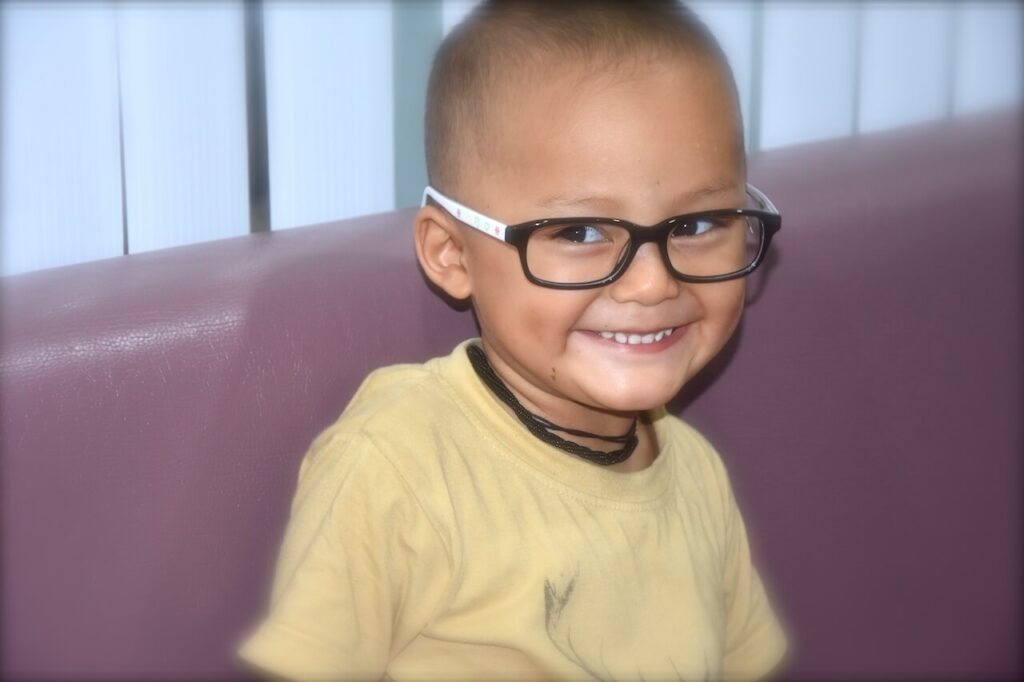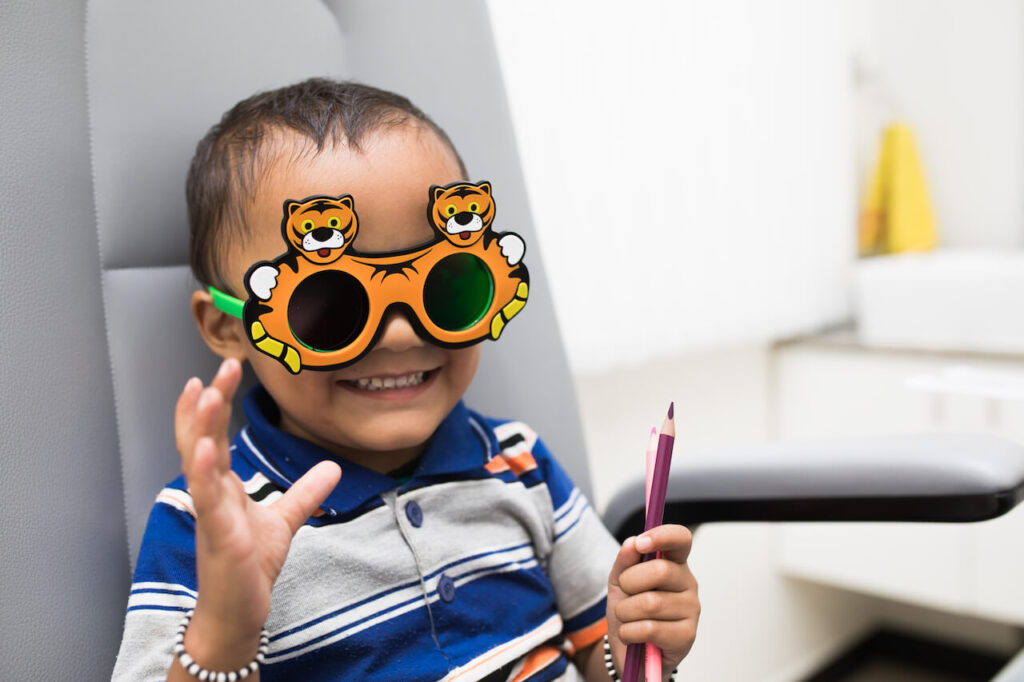PEDIATRIC EYE CARE
Children can be afflicted by many eye diseases. They may be born with or many develop cataracts, glaucoma or other problems. More commonly children may need glasses to see more clearly or intervention for squinting eyes or poor visual development in one eye. The management of eye problems in children requires special knowledge and skills. Even before the child can speak, pediatric ophthalmologists can tell what a child sees, if he or she needs eye glasses. Fortunately, most eye problems can be treated without surgery.
The goals is to improve the visual health of the children through prevention, early detection, treatment, and rehabilitation. These national efforts to inform the public about the importance of early eye care and the current limitations of vision screening are major issues currently.

OCULAR ONCOLOGY
It is a known fact regarding the interrelationship between vision problem and learning disability. Although vision problem is not the direct cause for learning disorders; however, they can interfere with children’s abilities to perform their potential. Successful treatment results can be obtained with early intervention. Children hardly complain.
Initial screening is done at birth by the pediatrician. This can detect life threatening eye disease of children like retinoblastoma and vision threatening conditions. Current recommendation is that all children receive professional eye care beginning at 6 months of age.
They are change in the eye power, lazy eye and deviated eye (squint). Within 6 months of life, rapid changes occur in most components of visual system. Interference with development during this very critical phase may lead to serious lifelong effects on vision and the eye can become lazy that can also lead to squinting.
- Sitting close to the TV or holding books very close
- Frequent rubbing of the eyes
- Making mistakes while copying notes from blackboard
- Excessive tearing of eyes & sensitive to light
- Squinting or tilting the head to see TV or blackboard better
- Cannot concentrate reading for long time
Most of the visual disorder in children can be corrected with glasses. Rarely they may need surgical intervention.
There is no age limit. It depends upon the type and power the child has according to their age. There is a standard limit of power for particular age. If it is beyond that, they should start wearing glasses.
If your child needs power glasses, keeping his or her eyes safe should be your first priority. Glasses with polycarbonate lenses offer the highest degree of protection to keep your child’s eyes safe while providing clear, comfortable vision. It is 10 times more impact-resistant than glass or regular plastic lenses. Polycarbonate glasses help protect your child’s vision by holding up to rough-and-tumble play or sports without cracking or shattering. We insist on polycarbonate lenses for children’s eyeglasses for safety reasons.
Mostly a child can manage contact lens wear by the age 11 to 14.The real issue for teens is not age, but whether they are responsible enough to wear and care for contact lenses properly.
If you are considering contact lenses for your child, take a look at how your child handles other responsibilities. Does he have good personal grooming habits, keep his bedroom and bathroom clean, and follow through with schoolwork and household chores? If children need frequent reminders to keep things clean and follow good hygiene practices, they may not be ready for the responsibility of wearing and caring for contact lenses. But if they handle such duties well, they might be excellent candidates for contacts
LASIK is not an option in children. It is preferred after 20 years of age. One big reason is that eyes may still be changing from one year to the next. For example, during high school and college years, nearsightedness may worsen a bit each year, until the eyes “settle” into a somewhat final prescription around the mid-20s. When the eyes are changing so rapidly, it doesn’t make sense to perform LASIK on them, because the effect of the surgery will not last.
The current standard of pediatric eye care suggests eye examination every 6 months to 1 year.

